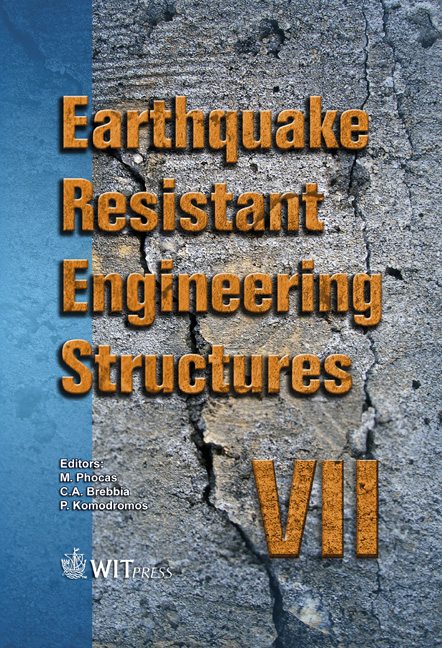Shear Deformation Effect In The Dynamic Analysis Of Plates Stiffened By Parallel Beams
Price
Free (open access)
Transaction
Volume
104
Pages
10
Page Range
357 - 366
Published
2009
Size
479 kb
Paper DOI
10.2495/ERES090331
Copyright
WIT Press
Author(s)
E. J. Sapountzakis & V. G. Mokos
Abstract
In this paper a general solution for the dynamic analysis of shear deformable stiffened plates subjected to arbitrary loading is presented. According to the proposed model, the stiffening beams are isolated from the plate by sections in the lower outer surface of the plate, taking into account the arising tractions in all directions at the fictitious interfaces. These tractions are integrated with respect to each half of the interface width resulting two interface lines, along which the loading of the beams as well as the additional loading of the plate is defined. Their unknown distribution is established by applying continuity conditions in all directions at the interfaces. The utilization of two interface lines for each beam enables the nonuniform distribution of the interface transverse shear forces and the nonuniform torsional response of the beams to be taken into account. The analysis of both the plate and the beams is accomplished on their deformed shape taking into account second-order effects. The analysis of the plate is based on Reissner’s theory, while the analysis of the beams is based on Timoshenko’s beam theory. Six boundary value problems are formulated and solved using the Analog Equation Method (AEM), a BEM based method. Keywords: ribbed plate, Reissner’s theory, Timoshenko’s beam theory, dynamic analysis, boundary element method. 1 Introduction Structural plate systems stiffened by beams are widely used in buildings, bridges, ships, aircrafts and machines. Moreover, for cases wherein the plate or the beams are not very \“thin” or the stiffeners are closely spaced, the error incurred from the ignorance of the effect of shear deformation may be substantial, while the
Keywords
ribbed plate, Reissner’s theory, Timoshenko’s beam theory, dynamic analysis, boundary element method.





